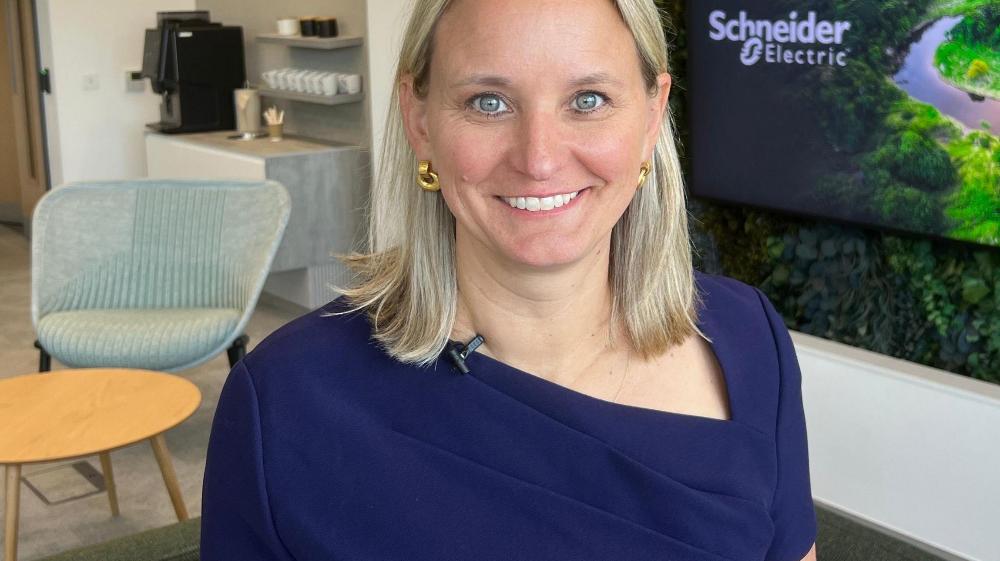London, UK – March 27 – Ahead of Earth Hour (Saturday, March 27th), Schneider Electric, the global energy management and automation firm, is calling on businesses to include CO2e reduction on their list of post-lockdown priorities. This year's event coincides with many companies dusting off their plans for a safe return to the office this summer. However, energy waste is the UK's third largest source of CO2 emissions, with at least 117 million tonnes generated by lost or wasted energy each year.[1] When workers start to return to cities in more significant numbers, energy consumption, bills, and waste are likely to 'bounce back' to these startling pre-Covid levels, if not become even higher.
Schneider has released a revealing time-lapse video showing the true extent of energy waste in London pre-pandemic as a reminder of what is at stake. Before the first lockdown in 2020, the company captured 5,400 high-definition images of light levels across the London skyline, finding that between 8:00pm and midnight, the time when people typically head home and retire to bed, light levels across the capital only fall by 30 per cent and remained more or less constant until 4:00am the following morning. By depicting energy waste in London, Schneider Electric hopes to help change perceptions and encourage action.
A staggering 28% of all energy-related CO2 emissions come from commercial and residential buildings.[2] During April 2020, more than half (57.2%)[3]of workers living in London were working from home, which contributed to a 19 per cent fall in electricity consumption from commercial premises, public administration, transport, and agriculture in Q2 2020, to 17.34 TWh - down from 21.42 TWh in the same period in 2019.[4]
"Perhaps the most shocking thing about energy waste is that most of us don't even recognise it when we see it," commented Kelly Becker, Schneider Electric Zone President UK & Ireland. "Nighttime cityscapes make beautiful images that are more likely to be hung as art on walls or downloaded as wallpaper on electronic devices than viewed as a depiction of energy waste. It's too easy to leave the office without switching the lights off, and this is just the one aspect of energy inefficiency that in the long run also costs businesses money and makes buildings less healthy and comfortable places to work in. As the economy reignites and people head back to the office in greater numbers, wouldn't it be incredible if we could avoid returning to previous levels of pollution and emissions, while also supporting better standards of public health? We need to address all this if we are to avoid going back to the bad old ways and build a truly green recovery."
Light is by no means the only source of energy waste. Energy is lost or wasted at every stage of its journey to our homes and businesses, in generation, transmission and our day-to-day use. With more emphasis placed on ventilation post-Covid, there could be even greater inefficiencies with heat lost through open windows. Schneider Electric has found that 82% of the potential means to reduce energy waste in buildings alone remains untapped. It has calculated that if we reduce energy consumption in just half of the world's existing buildings by between 30-50%, and continue to electrify and decarbonise energy sources, we could halve global emissions by 2040.
The measures and technologies needed to reduce energy consumption and waste, while also ensuring sufficient fresh air circulation to mitigate the potential transmission of air-borne viruses such as SARSCoV-2, and make buildings safer and more comfortable, are already widely available. They range from insulation, double or triple glazing, LED lighting and smart energy devices, to technologically advanced HVAC (heating, ventilation, and air conditioning) and smart building control systems that adjust temperature and lighting according to actual occupancy levels. Businesses have an opportunity to leverage the power of these and other technologies to track and reduce carbon emissions, while following guidance on ventilation, reducing bills, and contributing to achieving Britain's long-term carbon emissions goals.
"Reducing energy waste doesn't always require lifestyle changes, large scale investment in infrastructure or development of new technologies, but it can make a huge difference to our carbon emissions. But it's too easy to leave the office or home without switching the lights off and investing in energy-saving measures frequently requires an upfront investment. Whilst the investment will pay for itself in the long run, many landlords, businesses and individuals either can't access the money needed or would prefer to spend it elsewhere. If we are going to curb energy waste, we need tighter building standards on both new builds and existing building stock," added Kelly Becker.
Footnotes
- ^ [1] Schneider Electric Research, 2018
- ^ [2] https://www.iea.org/reports/tracking-buildings-2020
- ^ [3] https://www.ons.gov.uk/employmentandlabourmarket/peopleinwork/employmentandemployeetypes/bulletins/coronavirusandhomeworkingintheuk/april2020
- ^ [4] https://www.gov.uk/government/statistics/electricity-section-5-energy-trends



